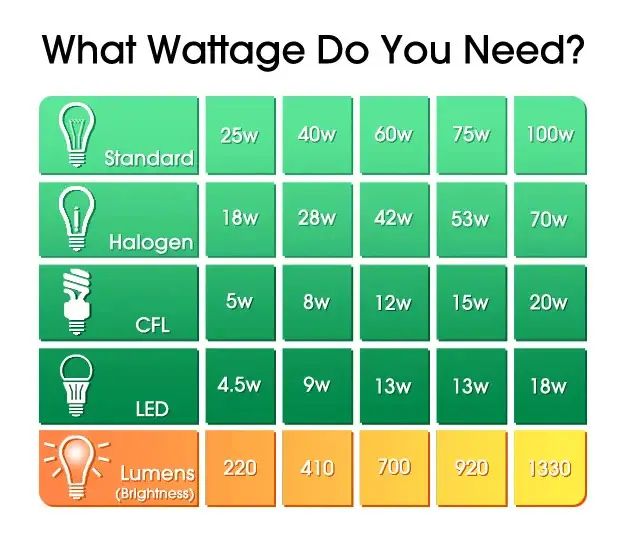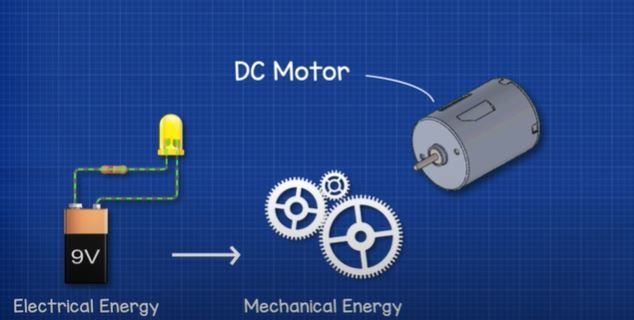What Is The Term For The Ability To Do Work?
The ability to do work is a fundamental concept in physics that is commonly referred to as “work capacity” or “working capacity.” This refers to the maximum amount of physical work an object, machine, or person can perform. Understanding work capacity is key for measuring processes in thermodynamics, engineering, sports science, and other fields.
This article will provide a comprehensive overview of work capacity, including its formal definition, relationship to energy, calculations, applications, historical usage, and current research. By the end, you will have a solid understanding of this important physics term and how it is applied across different disciplines.
Etymology
The English word “work” originates from the Old English word “weorc” which meant something that is produced through effort, labor, or task. It is related to the Old High German word “werah” which had a similar meaning.
The term’s root is the Proto-Germanic word “werkan” which meant to work or toil. This in turn comes from the reconstructed Proto-Indo-European root “werg” which referred to doing or making something.
The earliest known usage of “work” in English is found in Old English manuscripts dating back to the 8th century CE. At the time, it referred to exertion of effort or labor towards accomplishing a task or goal.
Formal Definition
The formal scientific definition of the ability to do work is work. Work is defined as force multiplied by distance. It is typically represented by the equation:
W = F x d
Where:
- W = Work (measured in joules in the SI system)
- F = Force (measured in newtons in the SI system)
- d = Distance (measured in meters in the SI system)
Work has units of energy, which are joules (J) in the International System of Units (SI). One joule is defined as the work done by a force of one newton moving an object one meter. Work is a scalar quantity, meaning it has magnitude but no direction.
Work can be calculated by multiplying the force applied to an object by the distance the object moves in the direction of the force. This captures the intuitive notion that a larger force or a longer distance results in more work being done.
Relationship to Energy
Work is closely related to the concepts of energy, power, and force in physics. Work involves the transfer of energy from one system (or object) to another. When a force is applied over a distance on an object, it does work on that object and transfers energy to it. The amount of work done is equal to the amount of energy transferred.
Power is the rate at which work is done or energy is transferred. If a certain amount of work is done over a longer period of time, the power is lower. If the same amount of work is done faster, then the power is higher. Power is equal to work divided by time.
The force applied on an object determines how much work can be done on that object. A greater force allows more work to be accomplished in a given distance. However, there must be displacement of the object for work to be done – no work is done if the object does not move, no matter how much force is applied.
In summary, work is integrally connected to key physics concepts like energy, power and force. The relationships between work and these concepts allow us to mathematically calculate and measure the work done in various mechanical systems.
Examples
Work is a concept that arises in many areas of physics and engineering. Here are some illustrative examples of work in different contexts:
Lifting a weight: When lifting a heavy box from the ground to a shelf, you are doing work against the force of gravity. The work done is calculated by multiplying the weight of the box by the height it is lifted.
Pushing a cart: Pushing a loaded shopping cart requires work to get it moving and keep it moving against friction. The work is equal to the force applied times the distance the cart is pushed.
Electrical work: In circuits, electrical energy does work by moving electrons through resistors. The work is calculated by multiplying current times voltage times time.
Mechanical work: In physics, the work done by a force acting on an object equals the force multiplied by the displacement of the object in the direction of the force.
Work in everyday life: From climbing stairs to typing on a keyboard, most physical activities require our muscles to do work by applying forces through distances. Without the capacity to do work, we could not function and accomplish tasks.
Calculations
Calculating work involves using simple formulas that relate work done, force applied, and distance moved. The most common formula used is:
W = F x d
Where:
W = Work done (in joules)
F = Force applied (in newtons)
d = Distance moved (in meters)
This formula shows that work is equal to the force multiplied by the distance. The greater the force and distance, the greater the amount of work.
Here’s an example of using this formula:
Let’s say a box exerts a force of 50 newtons while being moved 6 meters across the floor. Using the formula:
W = F x d
W = 50 newtons x 6 meters
W = 300 joules
So the work done was 300 joules.
Other variations of the formula can be used for different situations. The key is identifying the force applied and the distance or displacement involved in the specific scenario.
Applications
The concept of work is crucial in understanding and improving mechanical processes and technologies. Here are some key applications of work in physics and engineering:
Engines and Motors
Internal combustion engines, electric motors, steam engines all convert various forms of energy into mechanical work that powers vehicles, generators, and machinery. Maximizing the amount of useful work extracted versus the energy input is a key engineering challenge.
Machining and Manufacturing
Cutting, drilling, grinding, stamping, bending, and other manufacturing processes require mechanical work to shape raw materials into finished products. The rate of production depends on the amount of power (work over time) available.
Lifting and Moving Objects
Cranes, elevators, conveyor belts, and other devices use motors and hydraulics to do work lifting and moving materials and objects. The weight of the object and height it’s lifted determine the mechanical work performed.
Pumps and Compressors
Pumps apply mechanical work to move liquids from one place to another. Gas compressors use work to increase the pressure and store energy in compressed gas. The work to pump fluids is proportional to the volume displaced and pressure increase.
In all of these systems, maximizing efficient conversion of energy into useful mechanical work is a core engineering challenge. Understanding the thermodynamics and mechanical factors affecting work output is key to optimizing these technologies.
Historical Usage
The concept of work has played a pivotal role in the history of physics and engineering. While the notion of “work” had been utilized informally for ages, it was formally defined and named in the mid-19th century.
In 1826, Gaspard-Gustave Coriolis introduced the idea of “work” in connection with the efficiency of machines. He described work as “weight lifted through a height.” Building on this, in 1829, Lazare Carnot gave one of the first mathematical treatments of mechanics based on the concept of work. Carnot defined work as the product of force times displacement in a direction parallel to the force.
The modern definition of work was formalized in 1845 by Julius Robert von Mayer. He stated that work was a measure of the disappearance of mechanical energy as motion is transformed into other forms of energy like heat. This crucial insight helped establish the law of conservation of energy.
James Prescott Joule was another pioneer responsible for establishing the relationship between mechanical work and heat. Through experiments, he demonstrated their equivalence and determined the mechanical equivalent of heat as about 4.18 J per calorie. Joule’s contributions gave rise to the principles of thermodynamics.
Gustave-Gaspard Coriolis and Lord Kelvin were other influential 19th century scientists who utilized the concept of work extensively in analyzing machines and developing thermodynamics. The term continues to play a fundamental role in physics and engineering equations describing mechanical systems and energy transfers.
Current Research
Researchers are actively exploring new frontiers in understanding work and power. Cutting-edge studies are uncovering fascinating insights into how energy is transferred and labor is performed on both macro and microscopic scales.
MIT engineers have developed novel soft robotic systems that can perform work by deforming and moving in lifelike ways. These soft robots can accomplish tasks like grasping delicate objects or manipulating items with a feather-light touch – abilities that rigid robots struggle with. This bioinspired approach is opening new possibilities for robotics and automation.
On the miniscule level, physicists are investigating how molecular motors convert chemical energy into mechanical work inside living cells. They are characterizing how motor proteins like kinesin and dynein can “walk” along microtubule tracks and transport cargo within neurons and other cells. These molecular machines operate on principles of force, motion and chemistry that govern all work on the nanoscale.
As science continues to probe ever deeper into the essence of work and power, more innovations and insights are sure to emerge. The energetic capacity behind all movement, growth and change remains an exciting frontier of discovery.
Summary
In summary, work is a fundamental concept in physics that refers to the transfer of energy into mechanical motion or the physical displacement of an object. The formal definition of work is the product of force and displacement, and it is measured in units of joules in the SI system. Work allows us to quantify and calculate the effect of forces on physical systems.
Some key points covered in this article include:
- The etymology of “work” traces back to the Greek word energeia, meaning active or operational.
- Work is closely related to the concept of energy. Performing work requires expending energy, and energy is required to do work on an object.
- Examples of work include lifting weights, pulling objects, and rotating a wheel against friction.
- Work can be calculated by multiplying force and displacement. The units are joules (J) in the SI system.
- Work is an essential concept for analyzing mechanical systems across physics, engineering, and other fields.
- New research explores work at the quantum level as well as novel applications at the human scale.
Overall, the ability to perform work is a fundamental property of interacting objects and forces that underlies many physical processes. Understanding work provides insight into how energy flows through systems.







